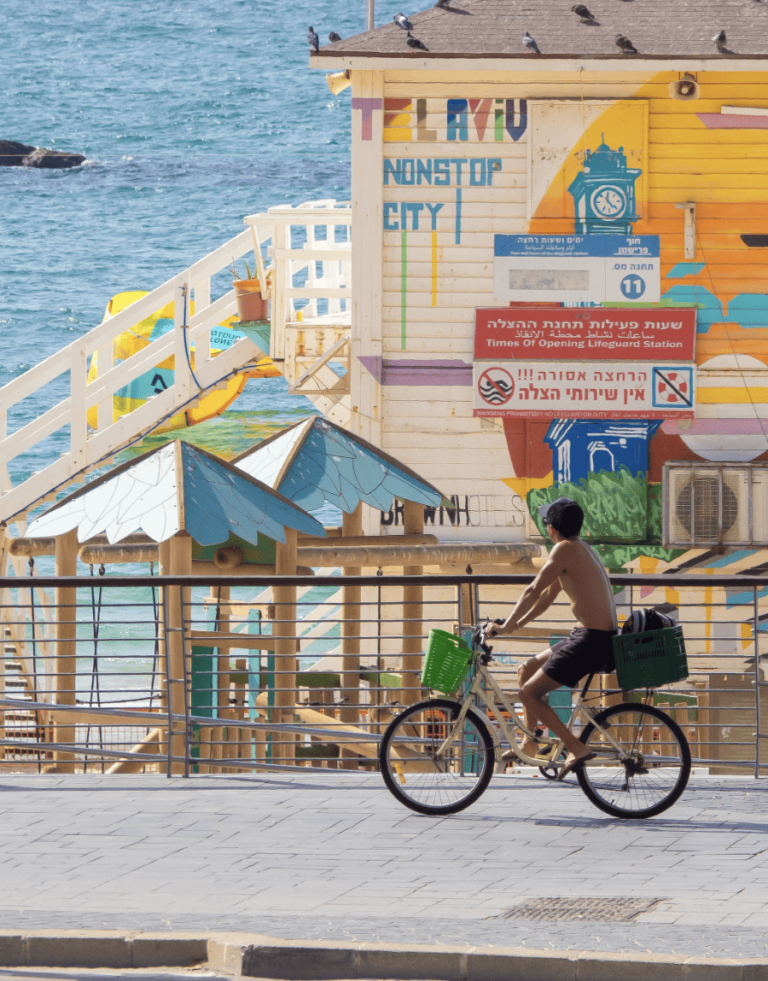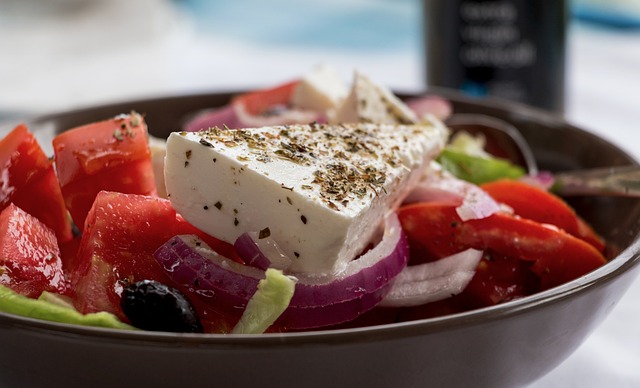Gluten-Free Travel Made Easy: 8 Hacks You Need to Know
Traveling is an exciting way to explore new places, experience different cultures, and taste new cuisines. However, for those with gluten intolerance or celiac disease, traveling can be a bit more complicated. Maintaining a gluten-free diet while on the road requires careful planning and consideration, but it shouldn’t stop you from enjoying your trip to the fullest. This guide will offer practical gluten-free travel hacks to ensure your journey is safe, enjoyable, and stress-free.
1. Planning Ahead: Research Gluten-Free Options for Stress-Free Travel
The key to a successful gluten-free trip is planning. A little research beforehand can make a world of difference in ensuring you have safe, enjoyable meals wherever you go.
Research Your Destination
Start by learning how gluten-free-friendly your destination is. Some cities and countries are incredibly accommodating, while others may pose challenges. For example:
- Italy is surprisingly gluten-free-friendly, with restaurants offering gluten-free pasta and pizza on their menus. Read more about Rome, Florence, Lake Garda and the beautiful Amalfi Coast.
- Japan and China may require more diligence, as gluten is commonly found in soy sauce and noodles.
Pro Tip: Use apps like Find Me Gluten Free or Happy Cow (which lists dietary-friendly restaurants, including gluten-free) to locate safe dining spots. Check reviews from other gluten-free travelers to identify the most reliable options.
Plan Gluten-Free Meals in Advance
Once you’ve identified potential restaurants, consider emailing them to confirm their gluten-free practices. Ask about cross-contamination protocols and whether they have a dedicated gluten-free menu. Additionally:
- Make a list of grocery stores that stock gluten-free staples in the area.
- Check out local celiac associations or travel blogs for advice specific to your destination.
Pack Your Own Snacks
Having your own snacks is a game-changer when traveling. Whether you’re stuck at the airport, on a long train ride, or in a location with limited gluten-free options, packing gluten-free staples ensures you always have something safe to eat.
Travel-Friendly Gluten-Free Snacks:
- Gluten-free granola bars
- Nuts and seeds
- Dried fruit
- Rice cakes
- Gluten-free crackers
On one of our trips, a long delay left us stranded at an airport with no gluten-free options available. While everyone else scrambled to find snacks at the nearest café, I handed my son a bag of gluten-free crackers and a sandwich I’d packed just in case. The look of relief on his face said it all—he didn’t have to worry about going hungry!
Moments like that remind me why preparation is so important, especially when traveling with dietary restrictions. A little planning can go a long way in making the journey smoother for everyone.
2. Gluten-Free Airline Meals: Request and Prepare in Advance
Navigating air travel with dietary restrictions can be tricky, but with a little preparation, you can make your flight gluten-free-friendly.
Request Gluten-Free Meals Ahead of Time
Most airlines offer special meals for dietary restrictions, but you need to request them in advance. Here’s how:
- When booking your flight, look for the option to select a gluten-free meal.
- If you don’t see the option, call the airline’s customer service to ensure your request is recorded.
- Request your gluten-free meal at least 72 hours before departure, and double-check with the airline 24-48 hours before your flight to confirm it.
Pro Tip: Even if you request a gluten-free meal, always carry a backup in case the airline forgets or there’s a mix-up. Airlines may not always have spare gluten-free meals on hand.
Bring Your Own Food
Pack safe, transportable meals for long flights. Options include:
- Sandwiches on gluten-free bread
- Pre-cut fruits and veggies
- Gluten-free granola or protein bars
- Individual packs of hummus or nut butter (check TSA guidelines for liquids)
Hack: Use reusable, spill-proof containers to keep your snacks fresh and secure. Many airports also have gluten-free options, but having your own ensures you’re not reliant on availability.
Pro Tip: Some airports (like those in the US or Europe) offer gluten-free items in lounges or shops. Search “gluten-free options at [airport name]” before you travel to identify locations.
3. Staying in Gluten-Free-Friendly Hotels and Accommodations
Choosing the right accommodations can make your gluten-free travel experience much smoother. With a bit of research, you can find places that cater to your dietary needs.
Book Hotels with Kitchen Facilities
Having access to a kitchen gives you full control over your meals, reducing the stress of eating out every day. Platforms like Airbnb, VRBO, or extended-stay hotels often provide kitchenettes, allowing you to prepare your meals with locally sourced, gluten-free ingredients.
Benefits of Cooking While Traveling:
- You save money by preparing your meals instead of dining out.
- You minimize the risk of cross-contamination.
- You can explore local markets for fresh, naturally gluten-free ingredients like fruits, vegetables, and proteins.
Gluten-Free Breakfast Options
When booking accommodations, check if the hotel offers gluten-free breakfast options. Many hotels are becoming more aware of dietary restrictions and may provide:
- Gluten-free bread or pastries
- Gluten-free cereals
- Yogurt, eggs, and fresh fruit (naturally gluten-free)
Pro Tip: Call or email the hotel before your stay to confirm their offerings. If the options feel limited, consider bringing your own gluten-free bread, cereal, or certified gluten-free oatmeal packets to supplement.
Stay in Gluten-Free-Friendly Hotels
Some hotels specialize in catering to dietary restrictions. Look for accommodations that advertise gluten-free dining options or those with partnerships with celiac organizations. For example:
- Hotels with dedicated gluten-free kitchens.
- Resorts with allergen-friendly buffet stations.
Hack: Use reviews on platforms like TripAdvisor or Booking.com to find hotels praised by other gluten-free travelers.

4. Communicating Your Needs: Language Barriers and Eating Out
When traveling to a non-English-speaking country, it’s crucial to know how to communicate your dietary needs clearly.
Learn Key Phrases
Learning a few key phrases in the local language can go a long way. For example, know how to say “I am gluten intolerant” or “Does this have wheat or gluten?” in the local language. If learning a new language isn’t your strong suit, there are gluten-free dining cards available in various languages. These cards clearly explain your dietary restrictions to restaurant staff.
Use Gluten-Free Apps
Several apps can help you find gluten-free restaurants and communicate your dietary needs while traveling. Popular options include:
- Find Me Gluten Free: Shows user reviews of gluten-free restaurants around the world.
- Gluten-Free Restaurant Cards: Provides cards with translations explaining your dietary needs in different languages.
- Google Translate: Helps translate menus or communicate with waitstaff in real-time.
When dining out, it’s essential to ask questions about how food is prepared to avoid cross-contamination. Make sure the restaurant understands that even a small amount of gluten can cause problems if you have celiac disease.
5. Grocery Shopping and Local Markets
Grocery stores and local markets can be your best friend when traveling gluten-free. Shopping for fresh ingredients allows you to control what you eat and avoid the risk of cross-contamination in restaurants.
Find Gluten-Free Groceries
Some countries have a wide selection of gluten-free products in their grocery stores, while others may not. European countries like the UK, Italy, and Germany tend to have a good variety of gluten-free options, especially in larger cities. Chain supermarkets often carry gluten-free bread, pasta, snacks, and other essentials.
Shop at Local Markets
Markets are a fantastic option for picking up fresh, naturally gluten-free foods like fruits, vegetables, meat, cheese and fish. These ingredients are not only gluten-free but also provide you with an authentic taste of local cuisine.

6. Traveling to Gluten-Free-Friendly Destinations
Some destinations are better suited for gluten-free travelers than others. If you’re planning a trip and want to prioritize ease of access to gluten-free food, consider traveling to gluten-free-friendly locations.
Top Gluten-Free Travel Destinations
- Italy: Surprisingly, Italy is one of the most gluten-free friendly countries in the world. You’ll find gluten-free pasta, pizza, and bread widely available, especially in tourist areas. Read more about Rome, Florence, or the Amalfi Coast
- Australia: Cities like Sydney and Melbourne have a booming gluten-free restaurant scene, with many eateries offering dedicated gluten-free menus.
- New York City: New York is a haven for gluten-free diners, with countless restaurants offering gluten-free options and dedicated gluten-free kitchens.

7. Dealing with Cross-Contamination Risks
Avoiding cross-contamination is one of the most critical aspects of staying safe while traveling gluten-free. Cross-contamination can happen in kitchens where gluten-containing and gluten-free items are prepared on the same surfaces or using the same utensils.
Ask Detailed Questions
When dining out, don’t hesitate to ask detailed questions about how food is prepared. Questions like:
- Is the gluten-free food prepared in a separate area?
- Do they use separate utensils and cutting boards for gluten-free meals?
- Is the gluten-free pasta cooked in separate water?
These questions will help you determine whether a restaurant takes gluten-free preparation seriously.
Stay in Gluten-Free Hotels
Some hotels cater specifically to gluten-free travelers and have kitchens that follow strict gluten-free practices. Researching these accommodations can take a lot of the stress out of worrying about cross-contamination during your stay.
8. Emergency Gluten-Free Kits and Medication
Despite your best efforts, there’s always a risk that you might accidentally ingest gluten while traveling. Preparing for this possibility can save your trip.
Pack Gluten-Free Medication
If you have celiac disease or are highly sensitive to gluten, it’s wise to pack anti-inflammatory medication, probiotics, or digestive enzymes that can help alleviate symptoms if you accidentally consume gluten.
Have a Backup Food Kit
In case you can’t find safe food, having an emergency kit with gluten-free staples can be a lifesaver. Include items like gluten-free oats, instant soups, or protein bars that you can rely on in a pinch.
Are You Ready for Gluten-Free Travel?
Your Gluten-Free Travel Readiness:
Common Challenges of Gluten-Free Travel and How to Overcome Them
Traveling gluten-free comes with its unique set of challenges, but with the right strategies, you can navigate them with ease. Here are some common hurdles and hacks to help you stay safe and stress-free:
Limited Gluten-Free Options at Airports or Train Stations
Finding safe food options in transit can be tricky. Here’s how to avoid going hungry:
- Pack your own snacks: Gluten-free granola bars, nuts, and rice cakes are easy to carry.
- Research airport restaurants: Apps like “Find Me Gluten Free” can help you locate dining options before your flight.
- Bring an empty water bottle to refill after security and stay hydrated.
Language Barriers When Explaining Gluten Intolerance
In non-English-speaking countries, communicating your dietary needs can be a challenge:
- Carry gluten-free restaurant cards: Choose a card in the local language (depending on where you travel) to explain your dietary needs.
- Learn key phrases, such as “Does this contain wheat or gluten?” in the local language.
- Use Google Translate to read menus or converse with restaurant staff.
Cross-Contamination Risks in Restaurants
Even gluten-free menu items can be exposed to gluten during preparation. Here’s how to stay safe:
- Ask detailed questions: Is gluten-free food prepared in a separate area? Are separate utensils used?
- Stick to naturally gluten-free dishes: Salads, grilled meat, and steamed vegetables are safer choices.
- Use apps like “Find Me Gluten Free” to locate highly-rated, celiac-safe restaurants.
Grocery Shopping in Non-Gluten-Free-Friendly Countries
Some destinations may lack labeled gluten-free products. Here’s how to shop smart:
- Visit farmers’ markets: Fresh fruits, vegetables, and meats are naturally gluten-free.
- Bring shelf-stable staples: Gluten-free bread, pasta, or crackers can fill gaps when local stores don’t stock them.
Staying Gluten-Free in Remote Areas
Remote locations can pose additional challenges for gluten-free travelers:
- Research chain restaurants or stores known for gluten-free options, like Carrefour in Europe.
- Carry an emergency meal kit with protein bars, instant gluten-free soups, or noodles.
Conclusion: Traveling Gluten-Free Can Be Easy and Enjoyable
Traveling with gluten intolerance or celiac disease might require a bit more planning, but it’s entirely possible to have a safe and enjoyable trip. By researching your destination, communicating your dietary needs effectively, and preparing for any potential food challenges, you can explore the world confidently and comfortably.
Always remember to stay proactive, pack your own snacks, and choose your dining and accommodation options wisely. With these gluten-free travel hacks in mind, your adventures will be filled with amazing experiences, free from the worry of gluten-related health issues.
For more detailed information you can refer to the Celiac Disease Foundation’s guide.
What are your favorite gluten-free travel hacks? Share your tips in the comments below!







